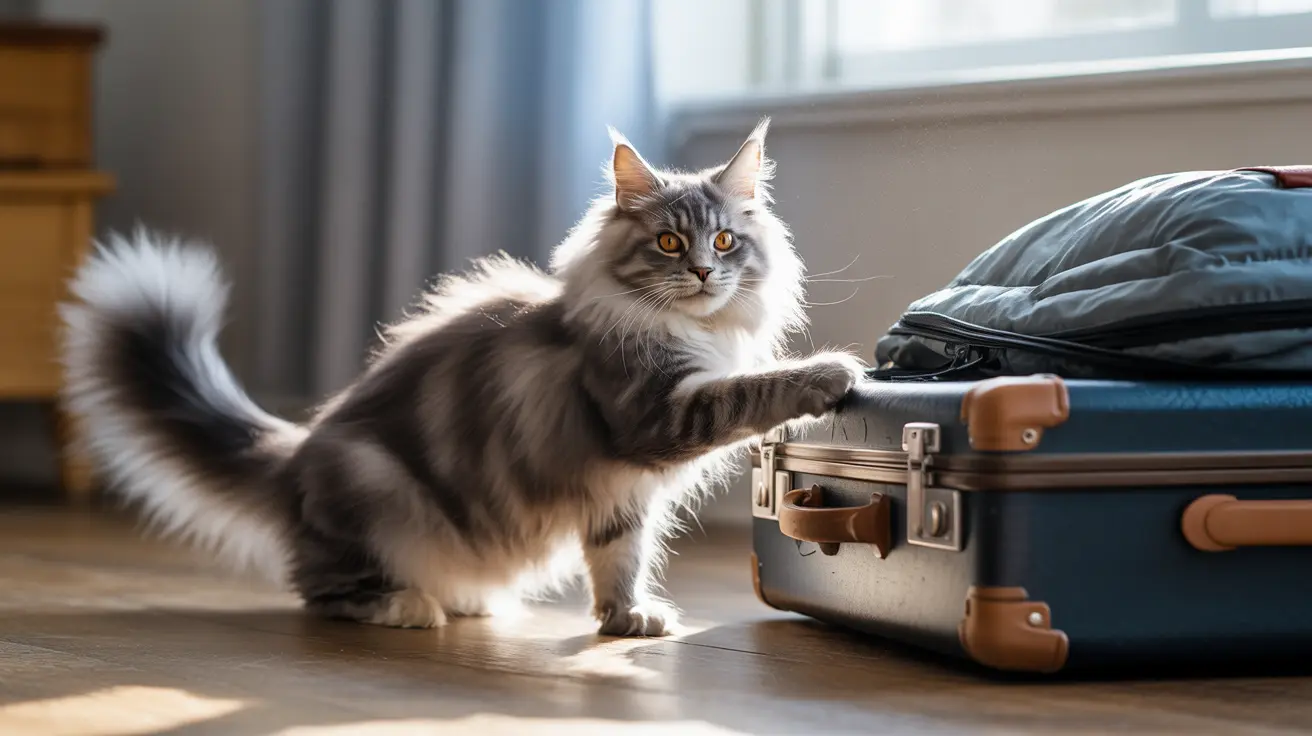Signs Your Cat Is Upset About Being Left Alone
Cats often display various behavioral changes that indicate they're unhappy about being left alone:
- Excessive vocalization or meowing
- Destructive behavior like scratching furniture
- Inappropriate elimination outside the litter box
- Increased clinginess upon your return
- Refusing to eat or changes in appetite
- Excessive grooming or self-directed behaviors
Understanding Feline Separation Anxiety
Contrary to popular belief, cats can develop genuine separation anxiety when left alone. This condition goes beyond simple displeasure and can manifest in more severe behavioral and physical symptoms. Some cats may experience intense stress that affects their overall well-being and daily functioning.
Risk factors for feline separation anxiety include:
- Being an only pet
- Previous abandonment or trauma
- Strong bonds with specific family members
- Sudden changes in routine or environment
- Limited exposure to being alone during kittenhood
The Science Behind Cat Attachment
Research shows that cats form genuine emotional attachments to their caregivers, similar to the bonds observed in dogs and human infants. These attachments can influence how they react to separation and reunion with their owners.
Studies have found that cats can experience heightened stress hormones when separated from their preferred humans, leading to various behavioral changes and emotional responses.
How to Help Your Cat Cope with Separation
There are several effective strategies to help ease your cat's distress when you need to leave:
- Create a consistent daily routine
- Provide environmental enrichment like puzzle toys and climbing spaces
- Leave familiar scented items like worn clothing
- Consider using calming pheromone products
- Arrange for regular check-ins from a pet sitter
- Gradually condition your cat to shorter absences before longer ones
Rebuilding Trust After Extended Absences
When returning home after a long absence, it's essential to approach your cat with patience and understanding. Allow them to readjust at their own pace and avoid forcing interactions. Most cats will eventually return to their normal behavior patterns with consistent, positive attention.
Frequently Asked Questions
Do cats get mad or upset when you leave them alone for a long time?
Yes, cats can become distressed when left alone for extended periods. While they may not experience "anger" as humans do, they can show signs of anxiety, frustration, and emotional upset through various behavioral changes.
What are the common signs that my cat is upset or anxious after I return from a trip?
Common signs include ignoring you, excessive meowing, destructive behavior, changes in appetite, inappropriate elimination, and either increased neediness or withdrawal from interaction.
How can I tell if my cat has separation anxiety when I'm away?
Signs of separation anxiety include excessive vocalization, destructive behavior while you're gone, inappropriate elimination, excessive grooming, and significant changes in eating or sleeping patterns.
What behaviors indicate my cat is stressed or frustrated when left alone?
Stressed cats may exhibit increased scratching, pacing, excessive grooming, urinating outside the litter box, aggressive behavior, or changes in their usual activity levels and eating habits.
How can I help my cat cope with my absence and adjust when I come back?
Help your cat cope by maintaining consistent routines, providing environmental enrichment, using pet sitters when possible, and giving them time to readjust upon your return. Gradual desensitization to your absences can also help prevent separation anxiety.
Conclusion
While cats may indeed experience emotional distress when left alone, understanding their behavior and implementing proper coping strategies can help maintain a healthy relationship with your feline companion. Remember that each cat is unique, and what works for one may not work for another. If your cat shows severe signs of separation anxiety, consulting with a veterinarian or feline behaviorist can provide additional guidance and support.






